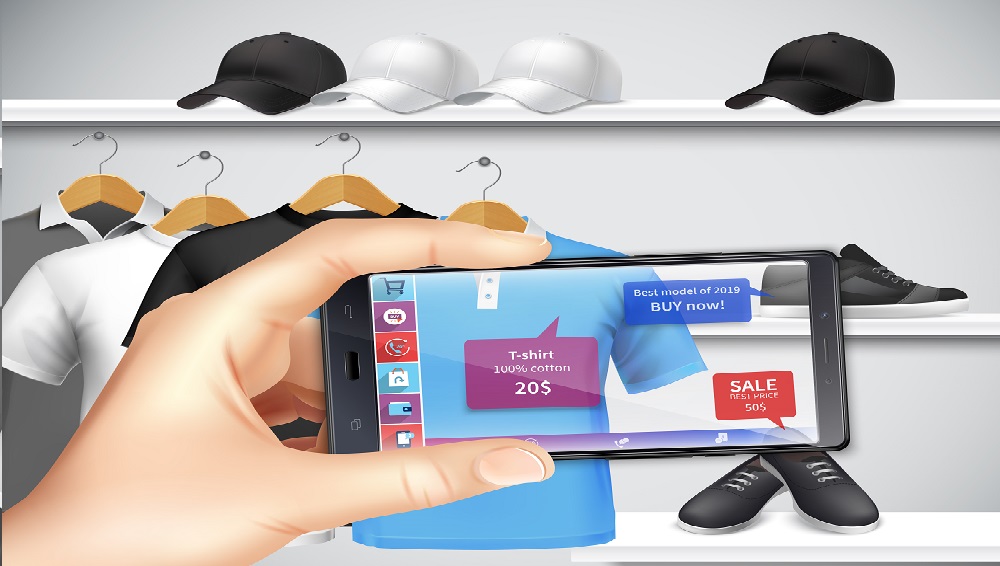Picture yourself: you’re home, cozy with a cup of tea, and don’t really feel like going out that day, but are in a mood to get some new clothes. Can you imagine being able to try on clothes without actually having to go out, or even putting any clothes on?
Augmented reality clothes development is already here with us and not just as the sci fi fantasy it once was. After many years of development is coming unto us at a fast pace with a ton of pilots and investments. Companies are starting to take notice of this new trend and all the benefits it brings to the table and are getting creative in order to maintain or even grow their customer base by implementing augmented reality try-on clothes.
What is different about AR trying clothes virtually is that is a three dimensional try on that appears automatically on a person as they move on real time which is revolutionary unlike a static image digitally fitted the way we have already seen before.
DEVELOPMENT OF AR CLOTHES
Mid last year the development started flourishing with the hardware and software updates from companies such as Snapchat and Apple. The Lidar cameras were a big improvement as well as the markerless body tracking, body segmentation and pose estimation.
You have to take into account that being restricted at home made people more comfortable into trying new types of online tools and tech. Either way augmented reality try-on clothes need more time to develop for more brands to join in the AR clothes wagon.
Brands like “DressX”, “Rtfkt”, “The Fabricant”, “The Dematerialised” among others claim that the virtual world has limitless possibilities for fashion and have plans to make virtually try-on clothes that can be worn on Zoom por example. Or there is this new possibility for artists to sell digital versions of their products internationally, taking into account that the physical merchandise is not available in certain parts of the world.
There is still a lot of room for improvement in this field, real-time virtually try-on clothes will need to feel authentic. So far, shoes, watches and sunglasses look pretty real in apps like Snapchat, but they are still working on the full-on apparel. Plus, there is another type of problem, which is the access to it. Not everyone has the latest device, so there is a great chance that not everybody will be able to try on clothes virtually.
There are some predictions that dictate that in years from now, people will own more digital clothes than physical items and expose them and express themselves through avatars.
BRANDS AND AR CLOTHES
Major brands are already experimenting and exploring in this scope, luxury brands such as Prada. Prada has invested in a try on app that includes a product catalog. The other brand is Macy’s, this retailer that is currently using both VR and AR technology which includes AR mirrors. But the most advanced augmented reality brand has to be Carolina Herrera bringing the experience to a lot more customers by web browser, which features their clothing collections and interactive options such as moving the clothes around, rotating it and how it would look in customers local surroundings. Ralph Lauren is also using try on virtual clothes, but in their case its nor necessary any customers body footage because the clothing is modeled on avatars created by the same customers. Last but not least The GAP, this brand has been using AR for about 4 years now, their products can be modeled on a 3D mannequin with different body types.
BRANDS USING AUGMENTED REALITY TRY ON CLOTHES

AU clothes in the fashion industry allow businesses to build their brands based on giving customers an immersive and unique experience, where they will be able to engage in a new and interactive way with the brands. Some of the following brands are already taking advantage of the AU clothes:
1.- SAKS FIFTH AVE
Has a RPR’s virtual clothing configurator that can be used with smart glasses or a phone.
2.- GOAT
Has the option of an AR try on sneakers before customers purchase.
3.- RALPH LAUREN
Has installed virtual mirrors in store fitting rooms to give customers a virtual try on experience.
4.- WARBY PARKER
Warby Parker allows customers to try on virtually glasses on their faces.
BENEFITS OF AR CLOTHES DEVELOPMENT FOR RETAILERS
AR clothes development offers so many opportunities for your business, as it increases the shoppers satisfaction while reducing expenses at the same time. It will benefit both, the consumer and the retailer, creating a synergy that improves customers experience, companies sales and brand visibility. The following are the most outstanding benefits we see fit for your business:
- Increased sales
- Minimizing returns
- Increasing customer engagement
- New social media content
- Customer preferences data recollection
- Exciting experiences
- Reduced staff expense
- Customer loyalty
- Reduces hygiene issues
THE FUTURE OF AR CLOTHES
There are quite a few benefits for companies choosing to go this way, like the functionality that an AR clothing app can bring, allowing customers to try on AR clothes at any time and in place, which will increase online sales. By using the app, it will definitely make more people engage with the brand’s products, which will leave a positive impact and will strengthen the company’s brand. This revolutionary way of making business and marketing will give customers an experience that many other brands will not be able to match, at least for a while if they don’t get on the AR clothes wagon. The possibilities are many, and as it will keep developing more possibilities will be available in the future.
At Stringnet US we create and develop AR experiences for fashion stores, and are available at any time for a consultation with our Augmented Reality solution providers, we can find an option for you according to your company’s goal, size of your brand and budget.


